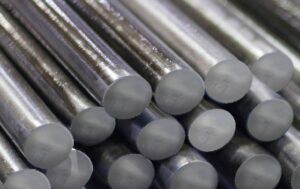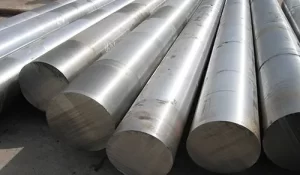When it comes to selecting the ideal material for various applications in industries ranging from construction to medical devices, stainless steel has proven its mettle time and again. Among the myriad stainless steel alloys available, 316 stainless steel round bars stand out as a versatile and durable option. In this comprehensive guide, we will delve deep into the properties of 316 stainless steel round bars, exploring their chemical composition, mechanical characteristics, and the diverse range of applications they cater to.
Understanding the Basics of 316 Stainless Steel
What is 316 Stainless Steel?
316 stainless steel, also known as marine-grade stainless steel, is a popular alloy in the stainless steel family. It is primarily composed of iron, chromium, nickel, and small amounts of other elements. This unique combination of elements gives 316 stainless steel its exceptional properties, making it a top choice for various industrial and commercial applications.
Chemical Composition
The composition of 316 stainless steel plays a pivotal role in determining its properties. Below is a breakdown of its chemical composition:
1. Chromium (Cr)
Chromium is a key component, constituting around 16-18% of the alloy. It provides 316 stainless steel with its corrosion-resistant properties, making it highly suitable for applications in corrosive environments.
2. Nickel (Ni)
Nickel makes up approximately 10-14% of the alloy. It enhances the steel’s resistance to corrosion and improves its ductility, making it easy to fabricate into various shapes, including round bars.
3. Molybdenum (Mo)
Molybdenum, present in small quantities (2-3%), further enhances the alloy’s corrosion resistance, especially in chloride-rich environments such as coastal regions and chemical processing plants.
4. Other Elements
Small amounts of elements like carbon, silicon, and manganese are also present to fine-tune the alloy’s properties.
Mechanical Properties
The mechanical properties of 316 stainless steel round bars are crucial for determining their suitability for different applications. Let’s explore these properties in detail:
1. Tensile Strength
316 stainless steel boasts an impressive tensile strength, typically ranging from 500 to 750 megapascals (MPa). This high tensile strength makes it ideal for applications where structural integrity is paramount.
2. Yield Strength
The yield strength of 316 stainless steel is around 200 MPa. This value represents the stress at which the material undergoes permanent deformation, and it indicates its ability to withstand loads without failing.
3. Hardness
The hardness of 316 stainless steel is typically measured on the Rockwell B scale and can range from 79 to 95 HRB, depending on factors like heat treatment.
4. Ductility
One of the notable characteristics of 316 stainless steel is its excellent ductility. It can be easily formed and fabricated into various shapes, including round bars, without compromising its integrity.
Corrosion Resistance
1. Pitting Corrosion
316 stainless steel exhibits remarkable resistance to pitting corrosion, which makes it suitable for use in marine environments and chemical processing industries where exposure to corrosive agents is common.
2. Crevice Corrosion
Its resistance to crevice corrosion is also noteworthy, ensuring long-term durability in applications involving tight joints or connections.
Heat Resistance
316 stainless steel maintains its strength and corrosion resistance at high temperatures, making it an excellent choice for applications involving exposure to elevated temperatures, such as exhaust systems and industrial ovens.
Versatile Applications
The exceptional properties of 316 stainless steel round bars open the door to a wide range of applications, including but not limited to:
- Marine Industry: Due to its superior corrosion resistance, 316 stainless steel is a preferred choice for boat fittings, underwater fasteners, and marine structures.
- Medical Equipment: Its biocompatibility and resistance to corrosion make it suitable for medical devices, including surgical instruments and implants.
- Food Processing: The alloy’s non-reactive nature and ease of cleaning make it ideal for food processing equipment and utensils.
- Architectural Use: Its aesthetic appeal and durability make it a popular choice for architectural elements like handrails and facade cladding.
- Chemical and Petrochemical Industry: 316 stainless steel is widely used in chemical processing plants and oil refineries due to its resistance to aggressive chemicals.
- Construction: It is used in structural components and reinforcement bars, especially in environments with high humidity and pollution levels.
FAQ
Q1. Is 316 stainless steel magnetic?
No, 316 stainless steel is generally considered non-magnetic. It falls under the category of austenitic stainless steels, which are non-magnetic in their annealed state.
Q2. Can 316 stainless steel round bars be welded?
Yes, 316 stainless steel can be welded using various welding techniques such as TIG (Tungsten Inert Gas) welding and MIG (Metal Inert Gas) welding. However, proper welding procedures and filler materials are essential to maintain its corrosion resistance.
Q3. What is the difference between 304 and 316 stainless steel?
While both 304 and 316 stainless steels are corrosion-resistant, 316 contains molybdenum, which enhances its resistance to chloride-induced corrosion. This makes 316 stainless steel more suitable for marine and chemical environments.
Q4. Are 316 stainless steel round bars suitable for outdoor applications?
Yes, 316 stainless steel is an excellent choice for outdoor applications due to its resistance to corrosion, even in harsh outdoor conditions.
Conclusion
In summary, 316 stainless steel round bars exhibit a remarkable combination of chemical composition and mechanical properties that make them a top choice for a diverse range of applications. Their corrosion resistance, heat resistance, and versatility make them invaluable in industries where durability and longevity are paramount. Whether it’s in the construction of a coastal structure, the manufacturing of medical implants, or the creation of architectural masterpieces, 316 stainless steel round bars continue to prove their mettle as a reliable and enduring material.


